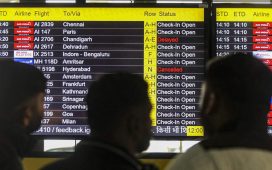Hunting for the container of nerve agent used in the attack on the former Russian spy Sergei Skripal was like “searching for a needle in a haystack”, a counter-terrorism forensics chief has said.
Keith Asman, the head of forensics and digital investigations for the police’s south-east region counter-terrorism unit, told the inquiry into the Wiltshire poisonings that officers combed the area around Skripal’s house for a small container of novichok and for discarded protective clothing the attackers may have used.
Asman said police were conscious that a member of the public – perhaps a child – could have picked up a bottle of novichok left behind after a dose of it was applied to Skripal’s front door handle.
But he said: “We were searching for a needle in a haystack. We didn’t know what the needle looked like or where the haystack was or if it was even in the country. We had absolutely no idea what we were looking for or where it may be.” He said it was possible that the “needle” didn’t even exist.
Skripal and his daughter, Yulia, fell ill after being contaminated by novichok apparently applied to the front door handle of his home in Salisbury by Russian agents in March 2018.
They survived but four months later, Dawn Sturgess died after spraying novichok over herself that had been contained in a fake perfume bottle. Her boyfriend, Charlie Rowley, has said he found the bottle in a charity shop bin in Salisbury.
Asman, whose previous cases have included the poisoning of the former Russian spy Alexander Litvinenko and the 7/7 bombings in London, said officers first looked for flower pots and drains around Skripal’s house and then expanded the search area. He said: “We were told it was likely to be small, man-made and out of place. It may carry liquid.”
One hypothesis was that it could have been discarded when the attackers changed their mode of transport, such as a meeting point between footpaths and roads.
Asman also told the Dawn Sturgess inquiry that initially he wondered if Yulia Skripal, who arrived from Russia into the UK the day before she and her father fell ill, may have “wittingly or unwittingly been party to what happened”.
It also emerged that when Yulia briefly awoke from sedation in hospital four days after the attack, she was asked by a doctor to blink a number of times to indicate yes or no to a series of questions, including if they had been attacked in a restaurant just before they fell ill.
She was asked:
“Do you remember what happened ?” – blinked yes.
“Do you remember being poisoned?” – blinked yes.
“Do you remember being sprayed” – blinked yes.
“Were you sprayed at home” – blinked no.
“Were you sprayed at the restaurant” – blinked yes.
She also wept. “I did wonder to myself if she was crying because she felt maybe she had been identified,” Asman said. The witness said tests in the restaurant ruled out the theory they had been attacked there and the door handle at Skripal’s house was identified as “ground zero”.
The work of forensic experts was dangerous and difficult. They were advised that novichok could penetrate personal protective equipment and officers were given blood tests when they entered and exited scenes to check if they had been contaminated – the first time Asman had known this to be done.
It was very cold in March when the Skripals were attacked and very hot in the summer when Sturgess was fatally contaminated. “Officers became sick through hypothermia [in March] and during the second inquiry I had officers who went down with extreme heat exhaustion because of operating in PPE,” he said.
The inquiry continues.










